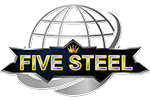It is the structural systems used in the facades that set them apart from associated building technology the most. It has been the pursuit of transparency in these long-span facade structures that has driven the development of structural systems. Generally speaking, facade structures supporting structural glass curtain walls are regarded one of the most distinctive features in a modern building today.

In practical applications, these exposed structures are generally classified as strong-back, simple support, mast truss, cable truss, glass fin and grid shell. And all the structural systems except strong-backs are capable of long spans of thirty meters or more, and while the implications of span vary between the systems, the general rule is that complexity increases with span. In some cases, curtain wall facade systems can be mixed in combinations that open up new possibilities of form and performance, or blended to shape hybrid facade structural systems. There are two distinct forms of structure arrangements used in structural glass curtain wall: "closed" and "open" systems. Specifically speaking, a structure whose primary stability is achieved internally, without the requirement for pre-tension forces applied against an anchoring boundary structure is considered as closed system, while a structure whose primary stability is achieved only through the pre-tension forces applied against an anchoring boundary structure is considered as open system. The primary feature that differentiates these structural systems, as a function of this arrangement, is the requirement for prestress, which must be determined as a function of the design and must be realized on site during the installation of the structure.
In the modern buildings, aluminium curtain wall systems can add cohesiveness and beauty to commercial buildings. Appearance varies depending on the type of curtain wall design used and the materials chosen by the architect. In some cases, the facade structures are even designed to accommodate movements and butt-glazed silicon joint so as to provide remarkable elasticity to the glazing systems. Furthermore, it is worth to note that highly flexible structures perform better under blast and impact loading. Combined with laminated glass, they are capable of greater and quicker deflections under load, mitigating blast effect. If you are seeking for the best aesthetics of your building, glass curtain wall systems can contribute a lot as these walls made up of aluminum and paired with glass can give an attractive and impressive look to the facade of your building that could easily attract the visitors. Even the latest and unique designs of curtain walls enhance your brand image and give professional look to your building which is really important to impress the business clients and customers.
Send your message to us:
Post time: Dec-15-2021




